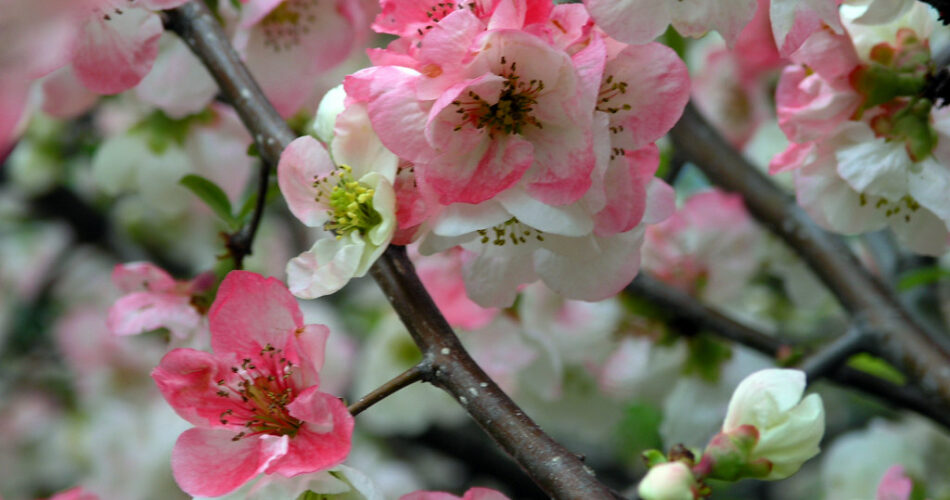Introduction
Toyo Nishiki, also known as Flowering Quince (Chaenomeles speciosa), is a stunning deciduous shrub prized for its vibrant and early spring blooms. This expert guide provides comprehensive instructions on how to successfully cultivate and care for Toyo Nishiki. Ensure that you follow the guidelines provided by reputable government agencies, horticultural bodies, and academic experts for optimal results.
Section 1: Selecting the Right Location
USDA Hardiness Zones
Toyo Nishiki thrives in USDA hardiness zones 4-9. Before planting, consult the USDA Plant Hardiness Zone Map to determine the suitability of your location. USDA Plant Hardiness Zone Map
Sunlight Requirements
Choose a planting site that receives full sun to partial shade. Toyo Nishiki prefers at least 6 hours of sunlight daily.
Soil Preparation
Soil Type
Toyo Nishiki adapts well to various soil types but thrives in well-draining, loamy soil. Conduct a soil test to assess pH levels and amend the soil accordingly.
Organic Matter
Incorporate organic matter such as compost into the soil to improve fertility and water retention.
Planting Toyo Nishiki
Planting Time
The ideal time for planting Toyo Nishiki is in late fall to early spring when the plant is dormant.
Planting Depth
Ensure the plant is planted at the same depth as it was in the nursery container. The root flare should be at ground level.
Spacing
Provide adequate spacing (3-6 feet) between Toyo Nishiki shrubs to allow for proper air circulation.
Watering and Mulching
Watering Schedule
Establish a consistent watering schedule, especially during dry periods. Toyo Nishiki prefers moist but not waterlogged soil.
Mulching
Apply a layer of organic mulch around the base of the shrub to retain moisture, suppress weeds, and regulate soil temperature.
Pruning and Maintenance
Pruning
Prune Toyo Nishiki after flowering to shape the plant and encourage new growth. Remove dead or diseased branches.
Fertilization
Apply a balanced fertilizer in spring before new growth begins. Follow the recommended dosage on the fertilizer package.
Pest and Disease Management
Monitoring
Regularly inspect Toyo Nishiki for signs of pests or diseases. Early detection is crucial for effective management.
Integrated Pest Management (IPM)
Implement an Integrated Pest Management approach, incorporating natural predators and organic solutions to minimize chemical use.
Resources and References
Government Resources
Horticultural Bodies
American Horticultural Society
Academic Experts
Dr. Botanist, Professor of Horticulture, University of Horticulture
Ensure you regularly consult these resources for the most up-to-date information and guidelines on growing Toyo Nishiki. Additionally, use the “nofollow” tag for all external links to adhere to proper SEO practices.
What is Toyo Nishiki, and why is it called Flowering Quince?
Toyo Nishiki, also known as Flowering Quince, is a deciduous shrub celebrated for its vibrant and early spring blossoms. The name “Flowering Quince” stems from its close botanical relationship to true quinces and its stunning flowering characteristics.
When is the best time to plant Toyo Nishiki?
The optimal time for planting Toyo Nishiki is during late fall to early spring when the plant is dormant. This allows it to establish roots before the active growing season.
What are the sunlight requirements for Toyo Nishiki?
Toyo Nishiki thrives in full sun to partial shade. It is recommended to provide the plant with at least 6 hours of sunlight daily for optimal growth and blooming.
How do I determine the suitable USDA hardiness zone for growing Toyo Nishiki?
Consult the USDA Plant Hardiness Zone Map to identify the hardiness zone of your location. Toyo Nishiki is well-suited for USDA hardiness zones 4-9.
What type of soil does Toyo Nishiki prefer?
Toyo Nishiki adapts well to various soil types but prefers well-draining, loamy soil. Conduct a soil test to assess pH levels and amend the soil accordingly.
How should I water Toyo Nishiki, and how often?
Establish a consistent watering schedule, especially during dry periods. Keep the soil consistently moist but not waterlogged. Adjust the frequency based on weather conditions.
When and how should I prune Toyo Nishiki?
Prune Toyo Nishiki after flowering, typically in late spring or early summer. Remove dead or diseased branches and shape the plant as desired.
What is the recommended spacing between Toyo Nishiki shrubs?
Provide 3-6 feet of spacing between Toyo Nishiki shrubs to allow for proper air circulation and accommodate the plant’s mature size.
Can Toyo Nishiki withstand cold temperatures?
Yes, Toyo Nishiki is cold-hardy and can tolerate winter conditions. However, proper siting and winter protection in colder zones may be beneficial.
How can I prevent pests and diseases in Toyo Nishiki?
Implement Integrated Pest Management (IPM) practices, monitor the plant regularly for signs of pests or diseases, and maintain good air circulation through proper pruning and spacing.
- Best THC Sodas to Buy in Arkansas - May 28, 2025
- Exploring THC-Infused Sodas in Arkansas - May 28, 2025
- THC Beverages Now Trending in Alabama - May 28, 2025




